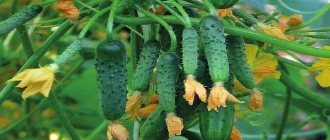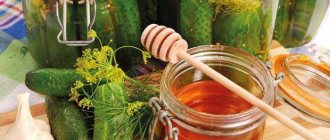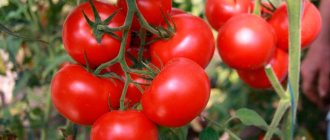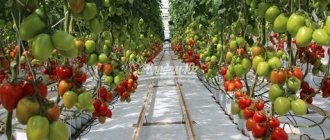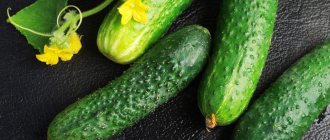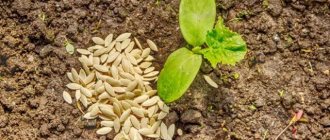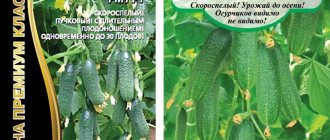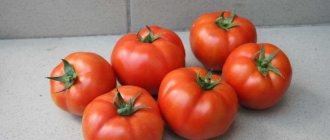Cucumbers are truly a folk crop, grown en masse by both experienced gardeners and beginners. Every summer resident wants to get as much harvest as possible, but for this you need to not neglect the recommendations. A procedure such as pinching greatly affects the number of fruits and helps prevent diseases. At first glance, it seems that it is quite simple to properly plant cucumbers in a greenhouse, but there are many nuances that we will discuss in this article.
What are stepsons and stepchildren
The cucumber plant has its own developmental characteristics. As a rule, one main shoot grows from the root, called a lash. It is on it that most fruits ripen (this is correct for self-pollinating and pancreatic cucumbers).
Side stems branch off from the central lash, which in gardening are called stepsons. Over time, they develop into vines as powerful as the main one, but the cucumbers that grow on them are of lower quality.
For their nutrition, the stepsons draw nutrients from the main stem, so all the resources that could feed the crop go to the growth of lateral shoots.
Pinching is the removal of side stems from the main vine. This event is not always necessary. If there are few stepsons - no more than 2 per bush, and they have already exceeded the length of 20 cm, then they can be left.
Along with pinching, pruning and pinching are carried out. All these procedures together make up an important cucumber care event called shaping.
Additional tips and tricks
- It is recommended to plant not only the shoots on the sides, but also the tendrils up to 6–7 true leaves.
- After removing the shoots, it is recommended to add fertilizer when watering, which will reduce stress to a minimum.
- You can tear it off with your hands, but it is better to carry out the procedure with special garden tools to avoid unnecessary injury to the plant.
- Also remove the stepsons with formed ovaries. They will take away nutritional resources and slow down the ripening of fruits.
- For long-term fruiting, remove the stepsons along the entire main stem, leaving the crown intact.
- The lashes are tied up artificially, and it is recommended to remove the plant's tendrils. This will ensure savings in nutritional resources and good illumination of the fruits.
- The first stepson should not be put off for long. Early removal of shoots from the sides has a beneficial effect on the development of roots, from where nutrients will subsequently flow.
- Stepchildren 20 cm long are not removed. A side branch is formed from them.
- For stepsoning, it is recommended to have separate gardening tools. After removing old or diseased leaves, the instrument is disinfected by soaking in a weak solution of potassium permanganate or calcining over a fire.
- In the second half of summer, cold snaps are observed at night in many regions, so it is recommended to cover the bushes with polyethylene.
Planting is a painstaking process, and often difficult for a beginning gardener. Therefore, it is worth listening to the advice and recommendations of more experienced colleagues.
Previous
CucumbersHow and how to feed cucumbers in open ground
Next
CucumbersHow to spray cucumbers against pests in a greenhouse and open ground
Why is it necessary to plant cucumbers in a greenhouse?
Carrying out this event requires spending a certain amount of labor and time. Stepping is carried out in several stages.
Neglect of plantings
The main attention should be paid to plants in the greenhouse and greenhouse. There are two reasons for this:
- The space is small.
- Good conditions affect the rapid growth of plants, and you may miss the favorable moment for pinching. If the case is neglected, you can lose the entire harvest.
Timing for pinching cucumbers in a greenhouse
In order to have time to plant cucumbers in a greenhouse (whether made of polycarbonate or any other material) on time, you need to constantly pay attention to how the shoots grow. If the bush has grown to 40 cm and 5 leaves have appeared on it, then it is time to remove unnecessary side shoots. Their length at this time is usually about 5 cm.
When calculating the timing of the first stepson, you should not check the lunar calendar or specific dates. The main role here is played by the speed of escape development.
Topping
Pinching also affects the growth of stepsons. If you remove the growing point from the central vine too early, then all the plant’s resources will go to the formation of stepsons, which will lead to an increase in the number of leaves.
The need for pinching cucumbers
As they grow, stepsons are formed on the bushes, which are of no value. The plant is forced to spend useful resources on their growth, which negatively affects fruiting. If the excess shoots are not removed in time, the main vine will stretch out, there will be fewer leaves, and the formation of cucumbers will stop.
Pinching - pinching off leaves and ovaries in order to increase yield. If this procedure is ignored, the bush becomes excessively dense. The plant spends nutritional resources on the growth of shoots, and not on the formation of fruits. Correctly carried out pinching improves the lighting of the bush, redistributes nutrients, thereby increasing fruiting.
Subtleties of pinching
The cucumber bush develops gradually, and the gardener will have to carry out pinching at least three times. The fact is that the plant constantly produces new shoots from the leaf axils.
For pinching you need a convenient sharp tool. An ordinary stationery knife or scissors will do.
You should not cut off the side shoot close to the main vine; you must leave at least half a centimeter. The procedure must be carried out very carefully to prevent damage to the main shoot.
The essence of pinching cucumbers in closed ground (greenhouse)
The main task is to redirect the plant’s resources to the main vine, removing the side stems in time. It is important not to miss the moment and carry out the procedure at the stage of formation of stepsons, preventing their growth.
| Number of leaves per vine | Carrying out stepsoning |
| 3-4 | + |
| 5-7 | + |
| 8-9 | + |
| 11 and more | Pinching the growing point to develop the plant wider |
It is necessary to adhere to the rules, but you also need to pay attention to the condition of each specific plant. Weakened or diseased bushes should not be pruned yet.
Read about growing, the intricacies of planting and caring for cucumbers in a greenhouse on our portal https://mrdachnik.com.
Growing cucumbers in a greenhouse step by step for beginners
Step-by-step instruction:
Stage 1. Tie up the bush, attach the other end of the twine to the trellis.
Stage 2. Carry out when the height of the bush reaches approximately 40 cm. Carefully cut off the side shoots from the leaf axils. It doesn’t matter whether they have ovaries or not, the stepsons must be removed. Up to 40 cm, there should not be a single lateral shoot on the central shoot. After pruning, water the bush well with heated water and loosen the soil.
Stage 3. This is carried out when the length of the bush increases by another 35-40 cm. It is necessary to remove the four lower leaves (pruning), as well as the side stepsons.
Stage 4. The cucumber bush has reached 80 cm, and there are no leaves or side stems on its entire lower part. The main load falls on the upper part of the lash, where it is necessary to leave one flower at each leaf axil. Remove all others.
At this stage, the lower part of the lash is bare, on the upper part there are from 3 to 5 leaves, one flower grows near each of them.
Stage 5. We wait until the central lash grows another 35-40 cm. Next stepsons are formed on it. Now there is no need to remove them. On each side shoot we leave no more than two leaves with a flower, and pinch the end (pinching procedure).
Stage 6. The height of the bush now reaches one and a half meters. New shoots at this stage do not need to be removed, but the lateral shoots can be lowered to the soil. You can wrap the side lashes around the supports.
The photo below clearly shows how to plant cucumbers in a greenhouse:
If you notice a slowdown in growth and a decrease in yield, fertilize the soil using ash and peat-based fertilizer.
How cucumbers differ by type of branching
The cucumber bush forms a long vine, which in a greenhouse can reach 5 meters. Primary shoots extend from it, on which secondary lashes are formed. If this process is not controlled, there will be an excessive number of leaves, and as a result, a lack of sunlight and nutrients.
All cucumbers can be divided into several types based on the type of branching.
| Branch type | Description | Varieties and hybrids of cucumbers |
| Excessive | From each node lateral shoots are formed, which can reach large sizes. | Klin variety type |
| Active | Most nodes are involved in the formation of additional shoots. | Phoenix and its hybrids |
| Active with self-regulation | While the main vine bears fruit, the lateral branches almost do not grow, and the beginning of active formation occurs only after the ripe fruits are collected. | Buyan F1, Maryina Roshcha F1, Little Thumb F1, Chistye Prudy F1. |
| Limited | Side shoots appear regularly, but are small in size and do not affect the appearance of fruits on the main vine. | Mazai F1, Ant F1, Grasshopper F1. |
| Weak | The stepsons are small and have only flowers. | Cupid F1, Balalaika, Bouquet F1. |
Depending on the type of branching, it will depend on how much time you need to devote to caring for the formation of the cucumber. For example, with weak ones, they practically do not require pinching and the harvest is produced in a short time. Like active self-regulating, but its fruiting is extended.
Cucumbers that do not require pinching
If you do not engage in timely pinching and proper formation of cucumber bushes, then you should not expect a high yield. After all, just like watering and fertilizing, these agrotechnical measures are necessary.
There is an opinion that pinching a crop is an unnecessary waste of time, and the yield does not depend on it.
However, with uncontrolled growth of bushes, the majority of male shoots or barren flowers are formed. And to increase the number of fruits, on the contrary, female shoots are required, which are formed only on the lateral parts of the plant.
Therefore, pinching is a necessary agricultural process that leads to:
- increase in female flowers;
- eliminating bitter taste in vegetables;
- increased fruiting.
Thus, you need to pinch all plants, without exception, that are constantly grown in open ground or in a covered greenhouse. Moreover, the former are, for the most part, insect-pollinated varieties, which bear more male inflorescences.
Therefore, such plants require more careful care than greenhouse bushes.
The opinion that hybrid species do not need pinching is true only for those species that have been bred recently; only experienced gardeners can recognize them:
- Valdai.
- Snowstorm.
- Blizzard.
- Izhorets.
- Northerner.
See also
Description of Patti F1 gherkin cucumbers and rules for growing a hybrid
Read
In such crops, the fruits are located on the main stem, and the side shoots develop poorly. Experienced summer residents and agricultural technicians recommend shaping any species, including hybrids, by removing the side stems so that the bush grows along the main stem.
Schemes for growing cucumbers in a greenhouse
There are several options for carrying out this procedure. They all have a certain effect.
In this case, it is necessary to take into account not only what type of branching the selected variety belongs to, but also how the flowering distribution occurs. For example, ordinary bee-pollinated varieties have only male flowers on the main stem, and all female flowers form ovaries on the side shoots. New hybrid varieties have female flowers on the central stem, and if you apply the old old-fashioned method of pinching the main stem to them, you will lose the harvest and no amount of fertilizing will help.
| View | Scheme |
| Bee-pollinated with active and excessive branching | Dedovskaya |
| Bee-pollinated and parthenocarpic with active and limited branching | Classical |
| Parthenocarpic | Danish umbrella |
| Bouquet parthenocarpic | In one lash |
The final choice of scheme remains at the discretion of the gardener.
Let's take a closer look at these diagrams.
“Grandfather’s” scheme of pinching with pinching of the main lash
This option is suitable for bee-pollinated cucumber varieties with active and excessive branching. It has stood the test of time and has been actively used by gardeners for many years.
- All shoots that appear before the 4th leaf are removed.
- After 7-9 leaves are formed, the main stem is pinched. Three strong lateral processes are left, the rest are removed.
- 4 nodes are left on each side lash and pinched. This leaves 12 nodes where the crop is formed.
When forming a cucumber in this way, it is better to use a net along which the side shoots will grow.
Classic scheme for growing cucumbers in a greenhouse
This scheme is suitable for bee-pollinated and parthenocarpic hybrids with active and limited branching.
Having chosen this option, you must act following the following algorithm.
- Wait until the plant grows to half a meter and forms the first 3-4 leaves. At this time, all the side stems and buds of the ovaries are cut off, but the leaves remain.
- The plant has reached a height of 1 meter - it’s time to remove the lower leaves, from which the stepsons were already removed at the first stage. On the upper part of the lash there remains one ovary for each leaf axil.
- The height of the plant is up to one and a half meters. On the side shoot (about 50 cm) two leaves and two ovaries remain, the rest is removed.
- Next, leave 3 knots. After the bush reaches a height of about 200 cm, pinching is not carried out.
There is no further need to interfere with the development of the cucumbers; you can throw it over the trellis. Another option is to pinch (tear off) the main lash. It is important to organize fertilizing and collect ripe fruits on time.
"Danish Umbrella"
Parthenocarpic varieties that are grown on a trellis are formed using the “Danish umbrella” method. It is suitable for experienced gardeners.
The scheme is as follows: the central lash is divided into three parts.
The first one is from sheets 1 to 5.
The second is from sheets 5 to 9.
The third is from sheets 9 to 20.
- In the first part, everything is removed - both the stepsons and the ovaries.
- In the second part, all stepsons are removed. One ovary is left for each node.
- In the third part, up to the 13th leaf, you need to leave 2 ovaries in each axil.
- 14 sinus - here the ovaries are removed, the stepson remains. After two leaves appear on it, the growth point of the stepson is pinched.
- Up to the 20th sinus, two short stepsons remain according to the same principle. There must be at least one node between them.
- In the axil of the 20th leaf, the stepson is left to grow. After 8 leaves grow on it, the growth point is pinched.
- Now the central lash needs to be thrown over the trellis.
- Next, you need to count the leaves from the top of the vine. The stepson is allowed to grow from the axil of the second leaf until 5 leaves are formed on it, then it is pinched.
- From the continuation lashes, three stepchildren of the second stage are allowed to grow. After the third leaf, the growing point on them is removed.
The main advantage of this method is simple plant care. The minimum number of leaves remains in the lower part, the entire crop is located at the top.
Scheme "One lash"
Bouquet and bunch parthenocarpic varieties allow formation into one vine. Only leaf axils and ovaries remain on it. All stepsons are subject to removal.
This option is not suitable for bee-pollinated varieties. The fact is that male flowers are formed in the axils of the central stem, and female flowers on the stepsons. Pruning the stepsons will deprive the gardener of the harvest.
- Up to 4 axils, all lateral stems and ovaries must be removed.
- From 4 to 17 leaves, the side shoots are removed, but the ovaries are left.
- The stepsons formed between the 18th and 20th axils are pinched so that 2 leaves remain on them.
The grown plant is wrapped around a trellis and waited until it grows to the neighboring bush. Then the top is pinched.
Do not forget! Cucumbers in the greenhouse need to be tied up. It is very convenient to use a mesh (trellis) for this. Read about this and other methods of tying on our website Mister Summer Resident.
When cucumbers grow
In order for the procedure to have a good effect on the plants, you need to know how to plant cucumbers in open ground. You can start when the plant has already reached 5-6 cm in height. There is no point in doing this earlier. If you are late, you can lose the fruits, since the plant will spend resources only on the development of stepsons, and not fruits.
We grow a cucumber in a garden bed on open ground in the first week of July. But if you carry out the procedure later, you need to leave a couple of shoots that will bear fruit when the main stem dries out and increase the harvesting period of the vegetable. If the procedure is carried out correctly, the cucumbers will ripen earlier and bear fruit better.
Varieties with one stem, varieties with many female flowers and species with a large lush bush do not need pinching.
Rules for pinching cucumbers
If a vegetable is grown in open ground, it must be planted. In order for the result to be positive, one of two types of stepsoning must be observed:
- Remove excess shoots, leaving one main stem that will bear fruit. This method is effective if the cucumbers are planted close and the branches are located vertically. This will make harvesting easier and give the garden a more well-groomed appearance.
- The second way is to remove the stepsons to 5-6 leaves. The plant will bear fruit better, and the bush will take on a well-groomed, lush appearance. But you need to pinch the tops in time so that shoots with female flowers form.
Method one
Excess shoots can simply be broken off
Before you start pinching, you need to know that the main stem produces male flowers, and the neighboring ones produce female flowers. Therefore, when a bush is planted, you need to take care of the conditions for the development of lateral branches.
You can start when the length of the plant has reached 6-7 cm. On young shoots, you can remove excess shoots without special tools.
If the plants grow at a short distance and twine around a vertical structure, then it is better to remove all shoots except one main stem.
Method two
If the vegetable grows horizontally, you need to remove the shoots up to the first 5-6 leaves. When 5-6 leaves grow, the procedure is carried out in a different way. On the shoots, one leaf and one ovary remain on the side; the main shoot is pinched.
When 8-10 leaves grow, the shoots that are in their axils are pinched again, but you need to leave two leaves and two ovaries. When the 11th leaf appears, all shoots must be removed, leaving only three ovaries and three leaves.
As a rule, when the 11th leaf grows, the plant is already quite tall. If it is tied up, you need to let the main stele grow about another 50 cm, when new fruits begin to set, cut off the top.
After this, you need to inspect the plant; if new shoots appear, remove them immediately. You don’t have to feel sorry for them, as these are extra shoots that put additional stress on the main stem.
Cucumber varieties and hybrids that do not require pinching
Breeders regularly develop new varieties that do not require careful care. There are types of cucumbers that do not need to be pinched. This inscription can be seen on many seed bags.
Variety Alphabet
Variety Bouquet
Variety Regina Plus
Variety True Friends
The most popular are:
- Alphabet F1. This gherkin has few branches, cucumbers grow in bunches. First, the ripened fruits are collected from the main vine, then the cucumbers begin to form small lateral shoots.
- Bouquet F1. Stepchildren practically never appear. An additional advantage is good immunity to various diseases.
- Regina-Plus F1 is an early ripening gherkin variety. Resistant to diseases, forms few lateral shoots.
- True friends of F1. This hybrid forms cucumbers in a bunched manner; there are few stepsons. Up to 8 cucumbers appear from each sinus.
Short stepsons appear on cucumber varieties such as Valdai F1, Gribovchanka F1, Vyuga F1, Severyanin F1, Sarovsky F1, Petrovsky F1.
Variety True Friends Variety Severyanin Variety Gribovchanka Variety Sarovsky
All other varieties will have to be planted in order to enjoy an excellent harvest.
Which cucumbers do not need stepson
To understand whether absolutely all cucumbers need to be pinched, you should pay attention to the structural features of each individual variety. Not all types of cucumber grow very much, and therefore for some varieties pinching is not at all necessary. The following species do not require pruning:
- forming only one stem and not growing;
- those that bloom only with female flowers;
- growing in the form of a bush and not producing climbing stems;
- producing only short side shoots.
Varieties that do not require pinching include:
- Northerner;
- Valdai;
- Gribovchanka;
- Snowstorm;
- Sarovsky F1;
- Petrovsky F1.
Tips for the garden, vegetable garden and flower garden
How to water flowers during vacation or long absence
Pear diseases and the fight against them with photos of what the leaves look like
Watering strawberries during flowering and fruiting
Planting cucumbers is a painstaking process, but not labor-intensive; it requires attention to plant growth. However, after performing the necessary manipulations, you will receive not only neat bushes that are easy to care for, but also a denser harvest, and the cucumbers will be early, juicy, large and devoid of unpleasant bitterness.
Harvesting begins 30–45 days after emergence. Cucumbers are harvested after 2–3 days at first, and after 1–2 days during the period of mass fruiting. When harvesting greens, be sure to remove ugly, overgrown and diseased fruits.
0
Caring for cucumbers during and after the pinching procedure
Cucumbers tolerate this procedure well, however, it is worth supporting the plants with fertilizing. Watering and ventilating the greenhouse should not be neglected.
Treating bushes with Oxychome, which contains copper, is also good. The solution of the drug should be sprayed on the shoots, this will prevent the appearance of fungal diseases, since spores can get into the injured stem.
What needs to be done after stepsoning:
- Water the bushes with warm water. To do this, be sure to fill the barrel or other large container in advance and allow the water to warm up in the sun.
- Don't forget about weeding.
- Remove all weakened and damaged leaves, as well as those that show signs of disease.
- Harvest ripe fruits in a timely manner.
- Additionally fertilize the soil.
What mistakes should be avoided when growing cucumbers in a greenhouse?
There is always a lesson to be learned from mistakes in growing. What experienced gardeners advise you to pay attention to when growing cucumbers in a greenhouse:
- Sloppy work. Additional shoots must be cut off carefully so as not to damage the leaves and flowers. It is necessary to use a sharp tool and not tear the shoots with your hands.
- Untimely execution of stepsoning. You should not do this procedure until four true leaves appear. If the moment is missed and the lateral process has grown, then it is too late to carry out stepsoning.
- Ignoring stepson patterns. All algorithms did not appear by chance, but were derived through many years of observation and experimentation. Not following the plan means depriving yourself of a good harvest.
- Lack of watering after pinching. Although cucumbers tolerate this procedure well, it is nevertheless quite traumatic. Plants need to restore the balance of microelements, so watering with warm water is necessary.
Further care
Performing the pinching procedure is not enough to obtain a good yield. Watering should be done regularly. It's better to do it in the morning. The water should first be left to steep so that it warms up to air temperature. Fertilizing with mineral fertilizers is carried out during the period when new ovaries do not appear.
Problems can be detected by the appearance of cucumbers and their taste. Then it is recommended to take steps to fix the problems:
- provide maximum illumination;
- remove weeds;
- balance the irrigation regime;
- till the soil.
Features of pinching cucumbers in open ground
When growing cucumbers without a greenhouse, it is important to carefully monitor the formation of stepsons and remove them in a timely manner.
There are two effective schemes, each of which gives good results.
- If the area where cucumbers grow is small, then you can arrange vertical beds. The bush is fixed on a support and formed into one main shoot. All stepsons are removed from the sinuses. It is optimal if the beds are located from north to south. This device provides all plants with sunlight.
- Not all stepchildren are deleted. There remain several small shoots containing no more than 6 nodes. After the central lash reaches 2.5 meters, it is pinched. This option is good for bee-pollinated or hybrid varieties. Female flowers are actively forming on the stepsons, so you shouldn’t cut them all off.
Another option for plant formation is an inverted pyramid. The stepsons are cut out from the first and second sinuses, and the shoots from the 3rd and 4th sinuses are pinched to 2-3 nodes. All the following stepsons can grow to a length of 40 cm. The result is a bush with one main lash and small lateral shoots.
